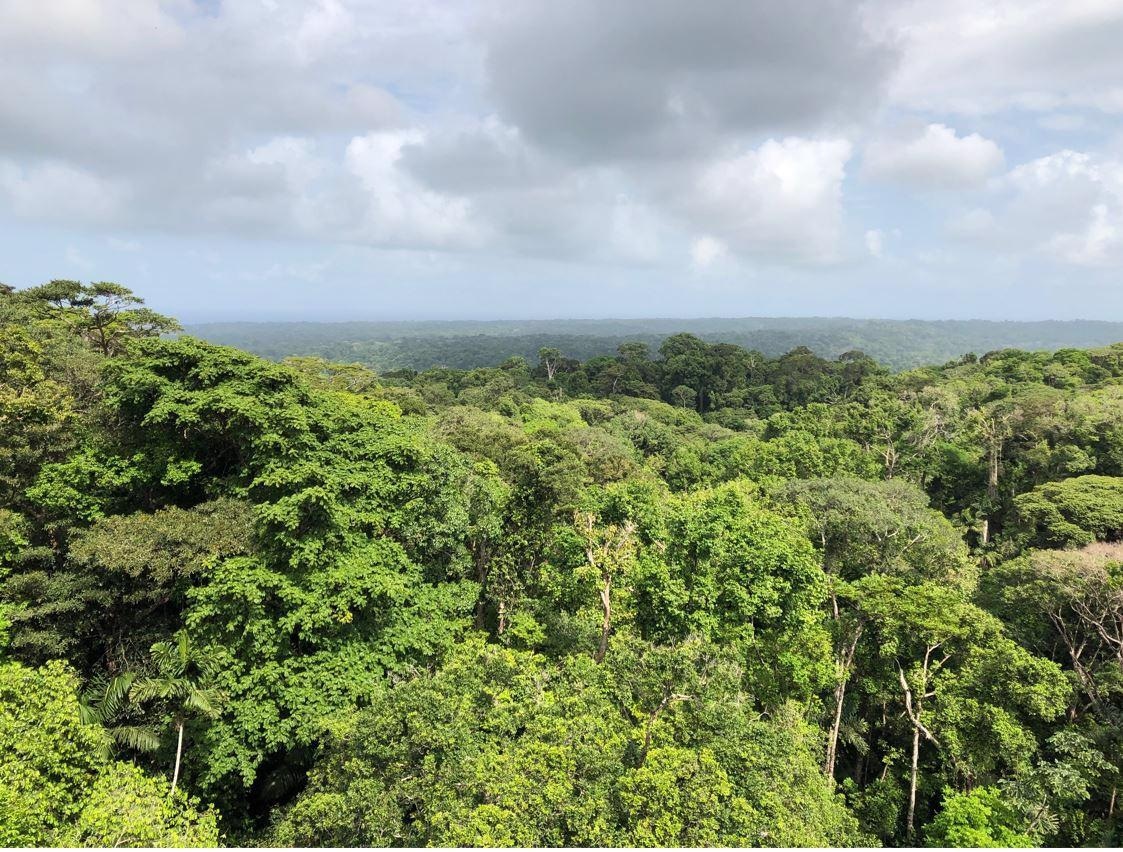Reviewed by Alex SmithAug 18 2021
Recent research by scientists from six different countries, including Camilo Alejo and Catherine Potvin of the Department of Biology at McGill University, analyzed the significance of Indigenous Territories in climate change mitigation across Panama and the Amazon Basin.

Image Credit: Image by Camilo Alejo.
The researchers discovered that Indigenous Territories portray effective natural solutions to fulfill the Paris Agreement by protecting forests and storing carbon. The scientists suggest that Indigenous populations should benefit from the payments that countries obtain for avoided greenhouse emissions considering that they play a significant role. The study has been published in PLOS ONE.
What is the Question to be Solved?
Natural environments, such as forests, take in carbon dioxide from the atmosphere and store that carbon in the forest ecosystem, primarily in living biomass and soil. The world’s forests store around 861 gigatons of carbon. Carbon stocks indicate the amount of carbon stored in this manner.
Safeguarding and managing forests are a cost-effective means to reduce climate change by increasing carbon stocks and lessening land-use emissions from activities like agriculture or forestry.
Indigenous Territories, customary lands of traditional societies that occupied countries before colonization, and Protected Areas, whose main goal is the conservation of nature, might be believed to be part of these natural climate solutions.
The research intended to evaluate the real effect of Indigenous Territories and Protected Areas on forest’s carbon stocks whilst, at the same time, considering the influence of their location across Panama and the Amazon basin portions of Colombia, Peru, Ecuador and Brazil.
Findings
The researchers discovered that Indigenous Territories are as useful as Protected Areas in conserving forest’s carbon stocks. For instance, in 2003, Indigenous Territories and Protected Areas in Brazil had around 6% more carbon stocks than private and unprotected lands. In 2016, this impact increased to 10% and 8.5%, respectively. Both protect losses and bring stability to the forest’s carbon stocks.
The researchers also identified that boundaries of Indigenous Territories secure more extensive carbon stocks than their surroundings, and this difference increases towards the less accessible or more remote areas. For example, Panama’s Indigenous Territories had carbon stocks that were 9% higher than their neighborhood at 1 km from their boundaries, and this amount was two-fold at 15 km.
Significance of the Results
The research reveals that both Indigenous Territories and Protected Areas are an efficient means to protect forests, store carbon and avoid land-use emissions from deforestation and degradation. Furthermore, the results are the first to establish that Indigenous land use in neotropical forests might have a stable effect on carbon stocks, signifying that Indigenous forest governance complements centralized forest governance in Protected Areas.
Forest governance defines how public and private actors, make and implement binding decisions about the management, use, and conservation of forest resources. Therefore, Indigenous Territories in Panama and the Amazon basin, along with offering material and cultural benefits to their inhabitants, can have an important role in climate change alleviation.
Who or What will be Affected by the Findings?
Under the Paris agreement, countries may depend on forest restoration, conservation and enhanced management for avoided greenhouse gas emissions. The findings of the research show that Indigenous Territories assist Nationally Determined Contributions (NDCs) under the Paris Agreement. NDCs embody efforts by every country to decrease national emissions and adjust to the effects of climate change.
The researchers propose that securing land titles for Indigenous Territories and formalizing forest co-governance when Indigenous Territories overlap with Protected Areas can provide multiple benefits. Firstly, Indigenous people may safeguard their livelihoods and culture. Secondly, national governments can attain their climate goals.
Lastly, provided the role of Indigenous Territories in climate change alleviation, the researchers highlight that those countries obtaining payments for avoided greenhouse emissions should consider Indigenous people recipients of such benefits. Indigenous populations must befit from results-based payments of the countries.
Journal Reference:
Alejo, C., et al. (2021) Are indigenous territories effective natural climate solutions? A neotropical analysis using matching methods and geographic discontinuity designs. PLOS ONE. doi.org/10.1371/journal.pone.0245110.